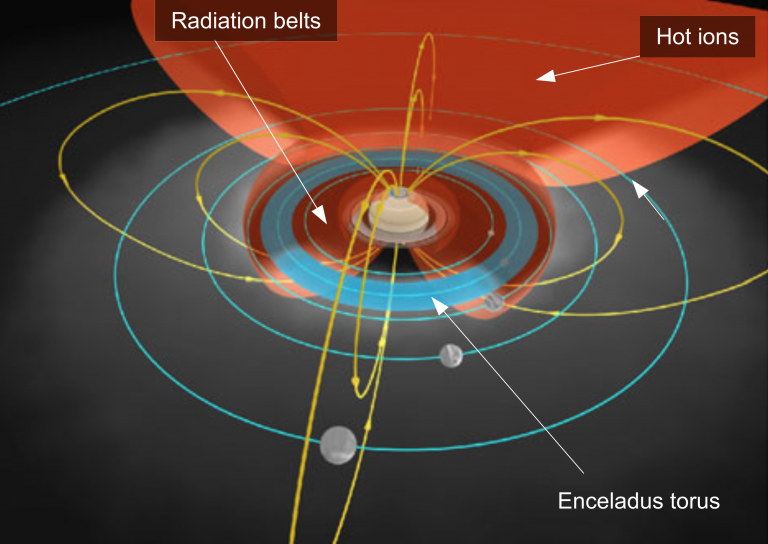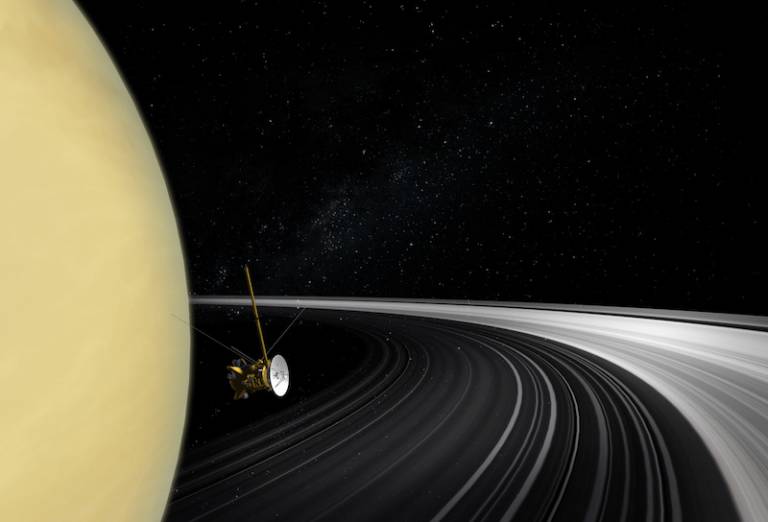Planets with magnetic fields are surrounded by regions known as magnetospheres. CPS members study these, and charged particles trapped within them, using spacecraft instruments and computer models.
RESEARCH THEME CONTACTS:
GERAINT JONES
NICK ACHILLEOS

Image: An artist's impression of the inner regions of Saturn's magnetosphere. Credit: C. Arridge.
Magnetospheres are found across the Universe from Mercury, Earth, and the giant planets of our Solar System, to exoplanets, pulsars and even our own Galaxy. Magnetospheres are regions surrounding celestial bodies that are dominated by electromagnetic forces, usually produced inside and near the parent body. The Earth’s magnetosphere has been studied for over 50 years and we have a very detailed understanding of its three-dimensional structure and variability. A flow of charged particles called the solar wind flows continuously outwards from the Sun. Magnetospheres can largely shield a planet with a global magnetic field from this wind. Interactions with the solar wind can lead to the generation of the aurora on Earth and other planets.
Using data returned from instruments we have built ourselves for missions such as the Cassini-Huygens project to Saturn, involvement in collaborators’ instruments, and theoretical studies, CPS planetary scientists at MSSL and UCL study many magnetospheres beyond the Earth. These magnetospheres are often driven by very different energy sources and have different sources of particles which populate the magnetosphere. Jupiter's magnetosphere is the largest physical structure within our Solar System. It could easily swallow the Sun and if it were visible to the naked eye it would appear twice as big as the Moon in the night sky even though it is 2000 times further away!
CPS planetary scientists use these data about magnetospheres to answer questions such as:
• How do the magnetospheres of other planets interact with the Sun?
• What are the sources of energy for particles in the magnetosphere?
• How do moons and ring systems interact with magnetospheres?
• How are auroral emissions produced on the giant planets?
Planets and comets that do not possess global magnetic fields can still form induced magnetospheres. Examples of these are the regions surrounding Venus, Mars, and active comets, and CPS scientists are very active in studying these too, using in situ instruments and ground-based observations.

 Close
Close

